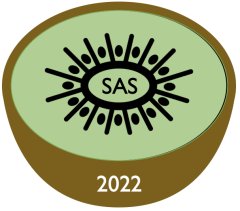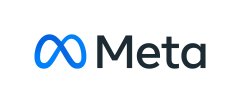29th Static Analysis Symposium
Welcome to the website of the 29th Static Analysis Symposium (SAS 2022). Static analysis is widely recognized as a fundamental tool for program verification, bug detection, compiler optimization, program understanding, and software maintenance. The series of Static Analysis Symposia has served as the primary venue for the presentation of theoretical, practical, and application advances in the area. A selection of papers will be invited to a special issue of Springer’s journal Formal Methods in System Design.
The proceedings of SAS 2022 are available! (free access for 4 weeks)

SAS 2022 Papers: Call for Papers
View track page for all detailsStatic Analysis is widely recognized as a fundamental tool for program verification, bug detection, compiler optimization, program understanding, and software maintenance. The series of Static Analysis Symposia has served as the primary venue for the presentation of theoretical, practical, and application advances in the area.
Important Dates
All deadlines are AoE (Anywhere on Earth).
- Full paper submission: Wednesday, May 4th, 2022
Are you running late in preparing your paper? No worries! Submit what you have by May 4th and you will have one extra week until May 11th for updating your paper.
-
Artifact submission:
May 18, 2022 AoEMay 25th, 2022 AoE -
Author response period: Monday, June 27th, 2022 - Thursday, June 30th, 2022
- Notification: Friday, July 15th, 2022
- Camera ready version due: Friday, September 16th, 2022
Topics
The technical program for SAS 2022 will consist of invited lectures and presentations of refereed papers. Contributions are welcomed on all aspects of static analysis, including, but not limited to:
- Abstract interpretation
- Automated deduction
- Data flow analysis
- Debugging techniques
- Deductive methods
- Emerging applications
- Model-checking
- Data science
- Program optimizations and transformations
- Program synthesis
- Program verification
- Machine learning and verification
- Security analysis
- Tool environments and architectures
- Theoretical frameworks
- Type checking
- Distributed or networked systems
Paper Submissions
All paper submissions will be judged on the basis of significance, relevance, correctness, originality, and clarity.
Submission link: https://easychair.org/conferences/?conf=sas2022
We welcome regular papers as well as papers focusing on any of the following in the NEAT (New questions/areas, Experience, Announcement, Tool) category:
- Well-motivated discussion of new questions or new areas,
- Experience with static analysis tools, Industrial Reports, and Case Studies,
- Brief announcements of work in progress,
- Tool papers.
We do not impose a page limit for submitted papers but we encourage brevity as reviewers have a limited time that they can spend on each paper. All regular papers will follow a lightweight double-blind reviewing process. The identity of the authors for the remaining papers will be known to the reviewers.
Submissions can address any programming paradigm, including concurrent, constraint, functional, imperative, logic, object-oriented, aspect, multi-core, distributed, and GPU programming.
Papers must be written and presented in English. A submitted paper must describe original work and must not substantially overlap with papers that have been published or that are simultaneously submitted to a journal or a conference with refereed proceedings.
All submitted papers will be judged on the basis of significance, relevance, correctness, originality, and clarity. The review process will include a rebuttal period where authors have the opportunity to respond to preliminary reviews on the paper.
Radhia Cousot Award
The program committee will select an accepted regular paper for the Radhia Cousot Young Researcher Best Paper Award in memory of Radhia Cousot and her fundamental contributions to static analysis, as well as being one of the main promoters and organizers of the SAS series of conferences.
Artifacts
As in previous years, we encourage authors to submit a virtual machine image containing any artifacts and evaluations presented in the paper. Artifact submission is optional. Artifact evaluation will be concurrent with the paper review.
Submission Details
Lightweight Double-Blind Requirement
All regular papers will follow a double-blind process, where author names and affiliations are hidden for initial review. Author names will be revealed to a reviewer only after their review has been submitted.
To facilitate this process, submitted regular papers must adhere to the following:
(1) Author names and affiliations must be omitted and (2) References to the authors’ own related work should be in the third person (e.g., not “We build on our previous work …” but rather “We build on the work of …”).
The purpose of this process is to help the reviewers come to an initial judgment about the paper without bias, not to make it impossible for them to discover the authors if they were to try. Nothing should be done in the name of anonymity that weakens the submission, makes the job of reviewing the paper more difficult, or interferes with the process of disseminating new ideas. For example, important background references should not be omitted or anonymized, even if they are written by the same authors and share common ideas, techniques, or infrastructure. Authors should feel free to disseminate their ideas or draft versions of their papers as they normally would. For instance, authors may post drafts of their papers on the web or give talks on their research ideas.
NEAT Papers Content
New problems papers are an opportunity to discuss visions, challenges, experiences, problems, and impactful solutions in the field of static analysis from both a research and applications perspective. Such papers are encouraged to take assertive positions and be forward-looking and aim for lively and insightful discussions that are influential to future research directions in static analysis.
User experience & Industrial reports & Case studies papers describe the use of static analysis in industrial settings or in any chosen application domains. Papers in this category do not necessarily need to present original research results but are expected to contain applications of static analysis as well as a comprehensive evaluation in the chosen application domain. Such papers are encouraged to discuss the unique challenges of transferring research ideas to a real-world setting, reflect on any lessons learned from this technology transfer experience, and compare experiences with different analyzers highlighting their strengths and weaknesses.
Brief announcements of work in progress papers may describe work in progress. A submission that is not selected for regular presentation may be invited for a brief announcement.
Submission guidelines
Authors should consult Springer’s authors’ guidelines and use their proceedings templates, for LaTeX, Overleaf, or Word, for the preparation of their papers.
The corresponding author of each accepted paper, acting on behalf of all of the authors of that paper, must complete and sign a Consent-to-Publish form. The corresponding author signing the copyright form should match the corresponding author marked on the paper. Once the files have been sent to Springer, changes relating to the authorship of the papers cannot be made.
SAS 2022 Artifacts: Call for Artifacts
View track page for all detailsAs in previous years, we encourage authors to submit any artifacts and evaluations presented in the paper. The goal of the artifact submissions is to strengthen our field’s scientific approach to evaluations and reproducibility of results. Artifact submissions also serve as a stepping stone for future research, allowing researchers to rapidly build upon existing tools, and better evaluate or contrast existing work.
Important Dates:
- Artifact Submission: May 18, 2022 AoE
Are you running late in preparing your artifact? No worries! Deadline is extended to the 25th!
- Artifact Notification: July 15, 2022 AoE (along with the paper notification)
Criteria
This year, as last year, each artifact can be awarded up to three badges:
Validated
Artifacts which can reasonably reproduce the experimental claims in the paper. This is the minimum expectation from a submitted artifact.
Extensible
Artifacts which allow easy addition of new capabilities. To be eligible for an Extensible badge, the artifact must be bundled with the source code and pass the requirements for the Validated badge. Reviewers may attempt to tweak the source code and recompile, in order to evaluate how easy it is to build upon the tool. Please note that the artifact submission is optional. Submitting source code with the artifact is also optional. However, artifacts without source code will only be eligible for the Validated badge.
Available
Artifacts which obtain at least a Validated badge, will obtain the Available badge if the authors upload the submitted version of the artifact to the Zenodo SAS 2022 public repository. If your artifact received the Validated badge during the artifact evaluation, you can add your artifact to Zenodo SAS 2022 community by publishing your artifact here. The title and set of authors of your Zenodo submission must match with your SAS submission. The files you need to add are your artifact (virtual machine or container image) and the step-by-step instructions. After you publish your artifact, we will accept it to the community if the submission is OK, and we will award you the Available badge.
Packaging
Authors can package their artifact either as a virtual machine image or a Docker container image, and provide step-by-step instructions for loading/running the artifact.
- Virtual machine image: The VM image must be bootable and contain all the necessary libraries installed. Please ensure that the VM image can be processed with VirtualBox. While preparing your artifact, please make it as lightweight as possible. Consider installing
sshin the VM to make it reachable even when virtual screen isn’t working (common problem when changing host hardware). - Container image: Authors can provide a zipped version of a container image containing the experiments, along with all dependencies. Please ensure that the zipped container image can be loaded using the docker load command. Please opt for container images only if your experiments can be executed and validated from the command line.
- Step-by-step instructions: This should clearly explain how to reproduce the results that support your paper’s conclusions. We encourage the authors to include easy-to-run scripts. Note that a reviewer may be evaluating your artifact on weaker hardware compared to your setup, so try to parameterize your scripts to allow running smaller versions of your experiments. Also, you should explain how to interpret the outputs of the artifact. If possible, please provide an estimate of the execution times for the experiments. Lastly, if you are providing the source code, try to provide an outline of how the code is structured.
Submission
Please follow the instructions below to submit your artifact:
- Package the VM/container image and the instruction document into a single compressed archive file using zip or gzip. Use your paper number for the name of the archive file.
- Upload the archive file to well-known storage service such as Dropbox or Google Drive and get the sharable link of it.
- Run a checksum function on the archive file. Create a text file that contains the link to the archive file and the checksum result.
- Submit the text file via the specific submission page on EasyChair.
Badges
The SAS Artifact Evaluation badges were designed by Arpita Biswas and Suvam Mukherjee, and are available for download from GitHub.



